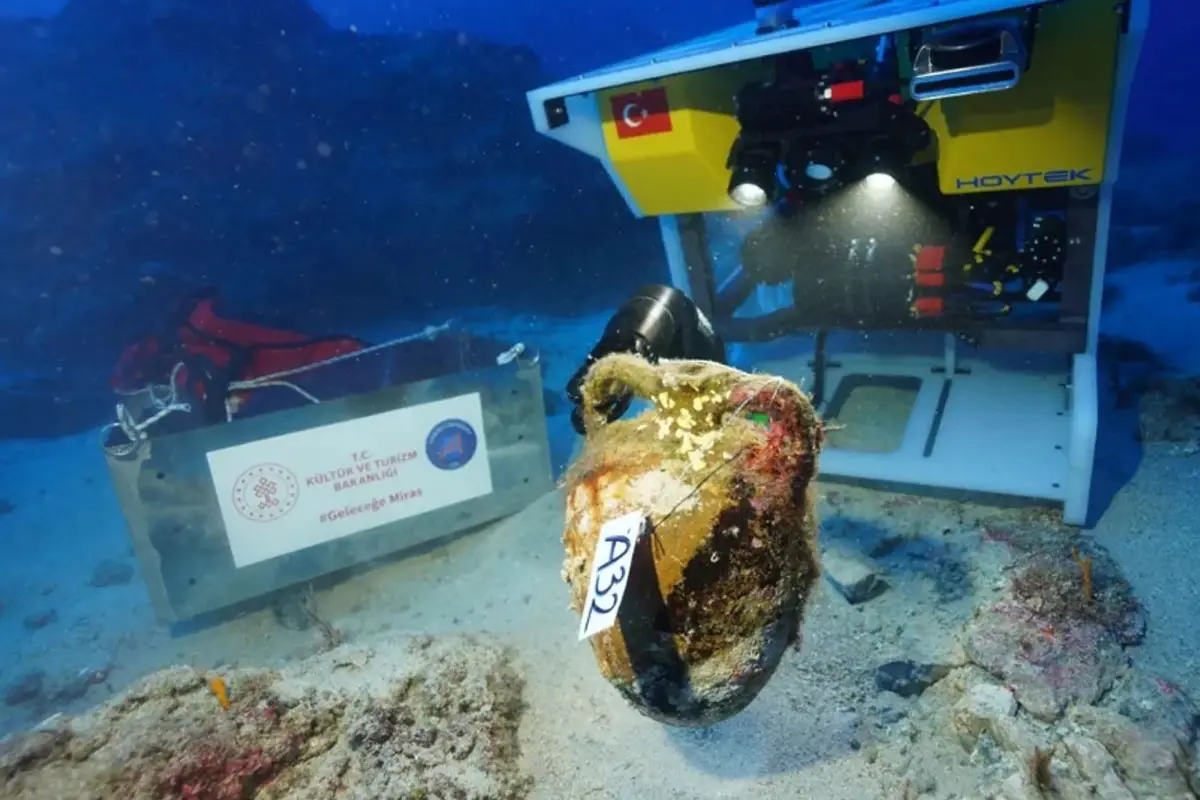Recent underwater excavations off the coast of Türkiye have revealed a shipwreck which set sail from Palestine 1,100-years-ago.
The excavations are part of the Heritage to the Future Project, an initiative by the Ministry of Culture and Tourism aimed at uncovering, preserving, and showcasing Türkiye’s archaeological and cultural heritage.
Discovered in 2024 at a depth of 45-50 metres off the coast of Antalya near Besmi Adası, the shipwreck has been identified by experts as a Philistine merchant vessel dating back to the 9th-10th century AD.
During antiquity, the vessel was transporting amphorae filled with olive oil when it was likely caught in a storm and collided with a rock or small island off the coast near Kaş.
The distinctive amphorae have regional form characteristics, allowing the researchers to trace the origins of the vessel to the Gaza area of Palestine, which around 1,100-years-ago was renowned for a thriving olive production industry.
Numerous olive pits were also discovered in the amphorae, which, according to Prof. Dr. Öniz from Akdeniz University’s Faculty of Fine Arts, served as a staple food for sailors in antiquity. “For about 5,000 years, olives have been a vital source of sustenance for Mediterranean sailors since the Bronze Age,” he explained.
Olives were an ideal food for long voyages, as they could be stored without spoiling and provided sailors with a valuable source of vitamin E to support their immune systems.
The discovery of the shipwreck is providing archaeologists with new insights into ancient maritime trade links, in particular with Palestine, as well as the importance olives played in the diets of sailors throughout the history of the Mediterranean.
Header Image Credit : Ministry of Culture & Tourism
Sources : Ministry of Culture & Tourism





